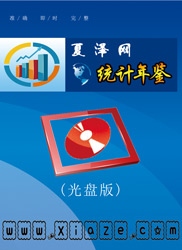一、《 广东统计年鉴—2021 》系统收录了全省及各市、县(区)2020年经济、社会各方面的统计数据,以及1978年以来各个主要时期全省主要统计数据,是一部全面反映广东国民经济和社会发展情况的资料性年刊。
二、本年鉴正文内容分为23个篇章,即:1.综合;2.国民经济核算;3.人口;4.就业和工资;5.固定资产投资;6.对外经济;7.能源、资源和环境;8.财政、银行和保险;9.价格;10.人民生活;11.农业;12.工业;13.建筑业;14.规模以上服务业;15.运输和邮电;16.批发零售业;17.住宿餐饮业和旅游;18.房地产业;19.教育和科技;20.文化和体育;21.卫生、社会福利、社会保障和其他;22.区域经济主要指标;23.县(市、区)主要经济指标。同时,附录有4个篇章:1.全国31个省(市)主要统计指标;2.中国香港特别行政区和中国澳门特别行政区主要统计资料;3.中国台湾省主要统计指标;4.部分国家和地区主要统计资料。
为方便读者使用,各篇章前设有《 简要说明 》,对本篇章的主要内容、资料来源、统计范围、统计方法以及历史变动情况予以简要概述,篇末附有《 主要统计指标解释 》。
三、本年鉴资料主要来自政府各级统计局、国家统计局调查总队的各种统计报表和抽样调查资料;部分资料来自中央部属单位和省直有关部门。附录资料根据国家统计局有关资料整理。
四、本年鉴涉及珠江三角洲、东翼、西翼和山区的具体划分为:
珠江三角洲包括:广州、深圳、珠海、佛山、惠州、东莞、中山、江门和肇庆。
东翼指汕头、汕尾、潮州和揭阳。
西翼指阳江、湛江和茂名。
山区指韶关、河源、梅州、清远和云浮。
五、资料中所使用的度量衡单位,除灌溉、播种面积照顾我国使用习惯继续用“亩”为单位外,其余均采用国际统一标准计量单位。
六、本年鉴中涉及到的历史数据,均以最新出版的本年鉴数据为准;年鉴中部分数据合计数或相对数由于单位取舍不同而产生的计算误差,均未做机械调整。
七、本年鉴统计表中的符号使用说明:
“…”表示数据不足本表最小单位数;
“ # ”表示其中主要项;
“空格”表示该项统计指标数据不详或无该项数据;
“ ① ”表示本表下有注解。
八、与《 广东统计年鉴—2020 》相比较,本年鉴在篇章结构和内容上主要做了如下修订:“综合”部分取消民营经济主要指标表;“核算”部分取消全省生产性服务业增加值,增加文化产业增加值表;“人口”部分增加反映第七次全国人口普查结果的总户数、总人口和性别比表、每10万人口中拥有的各种受教育程度人数表、主要年龄段人口数表和居住在城乡的人口数表;“就业与工资”部分取消按各种分组的就业人员年末人数表、各市就业人员年末人数表和各市按三次产业分就业人员年末人数表;“能源、资源和环境”部分增加各市废气排放情况、各市废水排放情况和各市工业固体废物排放情况表,取消各市“三废”排放情况表;“价格”部分取消固定资产投资价格指数表;“规模以上服务业”部分增加营业收入、营业利润、应付职工薪酬和就业人员平均人数的历年数据表;“教育和科技”部分将“分市全社会研究与试验发展研发经费”表调整为“分市全社会研究与试验发展人员与经费”表,新增各市研发人员指标;“规模以上工业企业新产品产出情况”表调整为“规模以上工业企业新产品开发与销售情况”表,删除“新产品产值”指标,新增新产品开发指标。
九、本年鉴中2011—2019年人口数据根据第七次全国人口普查结果进行修订,与人口相关的人均指标数据根据修正结果进行调整。
本年鉴在整理编辑过程中,得到省直有关部门和单位的大力支持,在此表示感谢!
EDITOR’S NOTES
Ⅰ. Guangdong Statistical Yearbook 2021 is an annual statistical publication, which reflects comprehensively the economic and social development of Guangdong Province. It covers data for 2020 and key statistical data in some historically important years since 1978 at the provincial level and the local levels of city, county and district.
Ⅱ. The yearbook contains twenty-three chapters: 1. General Survey; 2. National Accounts; 3. Population; 4. Employment and Wages; 5. Investment in Fixed Assets; 6. Foreign Trade and Economic Cooperation ; 7. Energy, Resources and Environment ; 8. Government Finance, Banking and Insurance; 9. Prices; 10. People's Living Conditions; 11. Agriculture; 12. Industry; 13. Service Enterprises Above Designated Size;14.Construction; 15. Transport, Postal and Telecommunication Services; 16. Wholesale , Retail Trades and Tourism; 17. Hotels, Catering Services and Tourism; 18. Real Estate 19. Education, Science and Technology; 20. Culture and Sports. 21.Public Health, Social Welfare, Social Insurance and Others; 22. Main Economic Indicators of Economic Regions; 23. Main Economic Indicators of Counties (County-level Cities) and Districts. Meanwhile, four chapters are listed as appendices: 1. Main Statistical Indicators of 31 Provinces and Municipalities; 2. Main Statistics of Hong Kong and Macao Special Administrative Regions; 3. Main Statistical Indicators of Taiwan Province; 4. Main Statistics of Some Countries and Territories. To facilitate readers, the Brief Introduction at the beginning of each chapter provides a summary of the main contents of the chapter, data sources, statistical scope, statistical methods and historical changes. At the end of each chapter, Explanatory Notes on Main Statistical Indicators are included.
Ⅲ. The data in this yearbook are mainly obtained from regular statistical reports and sample surveys conducted by the Statistical Bureaus at all levels of government and Survey Office of the National Bureau of Statistics. Some data are collected from the departments of the central government and the provincial government. Data in the appendices are compiled from statistical publications published by the National Bureau of Statistics and other sources.
Ⅳ. The pearl river delta, east wing, west wing and mountainous areas in the yearbook are divided as following:
The pearl river delta include Guangzhou, Shenzhen, Zhuhai, Foshan, Jiangmen, Dongguan, Zhongshan, Huizhou and Zhaoqing.
The east wing includes Shantou, Shanwei, Chaozhou and Jieyang.
The west wing includes Zhanjiang, Maoming and Yangjiang.
The mountainous areas include Shaoguan, Heyuan, Meizhou, Qingyuan and Yunfu.
Ⅴ. The units of measurement used in the yearbook are internationally standard measurement units, except that the unit of cultivated land and sown areas uses“mu” with regard to the Chinese tradition.
Ⅵ. Please refer to the newly published version of the yearbook for updated historical data. Statistical discrepancies on totals and relative figures due to rounding are not adjusted in the yearbook.
Ⅶ. Notations used in the yearbook:
“ … ” indicates that the figure is not large enough to be measured with the smallest unit in the table;
“ # ” indicates a major breakdown of the total;
“ blank space ” indicates that the data are unknown or are not available;
“ ① ” indicates footnotes at the end of the table.
Ⅷ. In comparison with Guangdong Statistical Yearbook 2020,following revisions have been made in this new version in terms of the statistical contents and in editing:Of the charpter ”General Survey”, Main Indicators Table of Private Economy are deleted; Of the charpter ”Accounts”, Value-added of Productive Service Industry are deleted, Value-added of Cultural Industry are added. Of the charpter “Population”, table of total households、population and gender ratio reflecting the results of the Seventh National census、number of people with various levels of Education Attainment and Region per 100000 population, population table of main age and living in urban and rural area are added; Of the charpter “Employment and Wages”, number of employed persons by various groups at Year-end、number of employed persons by city at Year-end and number of employed persons by three strata of industry by city at Year-end are deleted; Of the charpter “Energy, Resources and Environment”, statistic on discharge of Waste Gas by city、statistic on discharge of Waste Water by city and statistic on discharge of Industrial Solid Waste by city are added, statistics on discharge of Waste Water, Waste Gas and Solid Wastes by city are deleted; Of the charpter “Price”, Price Indices for Investment in Fixed Assets are deleted; Of the charpter “Service Enterprises Above Designated Size”, the Calendar Year Data Sheet of business revenue、business profits、total wages payable and average number of employed persons are added; Of the charpter “Education and Technology”, the table about research and development expenditure by city change into the table about personnel and expenditure of research and development by city, indicators on research personnel by city are added; The table about production of new products by industrial enterprises change into the table about development and sales of new products by industrial exterprises, indicators on output value of new products are deleted, indicators on new products development are added.
Ⅸ. Population data from 2011 to 2019 in this yearbook adopt the result of the Seventh National Census, per capita index related to population adjusted by correction result.
Acknowledgements: our gratitude goes to relevant departments and units under the provincial government, from which we have received tremendous support when compiling the yearbook.



